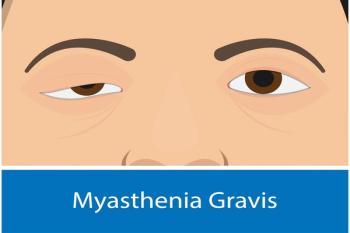
Older Adults With COPD Report Barriers, Motivators to Using Wearable Activity Trackers
Older adults with chronic obstructive pulmonary disease (COPD) identified factors likely to encourage or discourage patients from utilizing different technologies to track and improve physical activity.
A study evaluating the opinions of older adults with chronic obstructive pulmonary disease (
The study results, which were
“This information will be useful to guide the future optimization or development of health technology, such as AVGs to encourage physical activity in older adults with chronic disease,” wrote the investigators.
Wearable activity trackers and activity monitoring apps provide patients with COPD constructive feedback, encouragement, and the ability to automatically update their physicians on their condition. Additionally, AVGs, which involve physical activity to play a game, have proven to be an alternative and enjoyable form of exercise for older patients with chronic neurological and cardiac diseases.
However, few studies have examined the factors that may influence the usefulness of these technology-based interventions for physical activity in older adults. Data on long-term adherence to AVG interventions in elderly patients with chronic diseases have also been limited and contradictory.
The investigators adopted an exploratory approach by conducting interviews with patients with COPD who were recruited from several pulmonary support groups in the Brisbane, Australia, area. All participants had to have a COPD diagnosis and previous experience with a formal exercise program, such as pulmonary rehabilitation, to help manage their COPD.
Nineteen adults with a mean (SD) age of 70 (6) years were enrolled in the analysis, 11 of whom were female (58%). The participants reported having experience with several technological devices: computers (n = 13), smart televisions (n = 3), tablets (n = 9), smartphones (n = 14), and smart watches or wearable activity trackers (n = 3).
The participants reported a lack of education or instruction on various technologies as a barrier to using them, and some felt that their knowledge was outdated or forgotten. However, the patients stressed that technology was essential to their lives and that they generally saw the value in wearing activity trackers, with some reporting they served as a helpful reminder to move and reach activity goals.
Competition was cited as both a motivator and a barrier to using wearable activity trackers and AVGs. Some participants expressed that having their performance compared with other people who didn’t have a chronic disease or had a less severe disease seemed unfair while others said that a competitive aspect increased their motivation.
In addition, some participants said that AVGs gave them an opportunity to play alongside family members and were useful to pass the time. However, some patients reported that having no one to play with discouraged them, and some said that they felt unable to play some games because they required physical activity that was too difficult for their age or disease state.
Some patients said that they didn’t have the equipment to participate in AVGs, with some reporting that only their grandchildren had access to certain gaming consoles.
In general, the participants were positive about the idea of sharing data with clinicians, but some expressed concerns over the accuracy of the information or whether providers would be interested in or have the time to review that information. Data privacy was not identified as a big concern.
“There is some evidence that suggests that older adults are not particularly concerned about the privacy implications of sharing physical activity data, although this could be because they are not as aware of the risks,” wrote the investigators.
They suggested that clinician perspectives should be incorporated when designing an intervention involving the sharing of patient health data to ensure that clinicians can interpret and use the data sent from activity trackers.
“Clinicians may benefit from education or professional development training specific to the use of technologies to ensure clinicians are aware of the strengths and limitations of these devices and can competently integrate data from these technologies into clinical decision making,” the investigators said.
The researchers identified the primarily Caucasian sample and a potential self-selection bias of patients more likely to use technology as study limitations.
“AVG interventions designed for people with COPD should place an emphasis on the health benefits and enjoyment, should be able to be played with other people, and should use equipment that people with COPD already have, or are familiar with (eg, smartphones, tablets),” noted the investigators.
Reference
Simmich J, MAndrusiak A, Russel T, Smith S, Hartley N. Perspectives of older adults with chronic disease on the use of wearable technology and video games for physical activity. Digit Health. Published online May 30, 2021. Accessed June 21, 2021. doi: 10.1177/20552076211019900
Newsletter
Stay ahead of policy, cost, and value—subscribe to AJMC for expert insights at the intersection of clinical care and health economics.













































